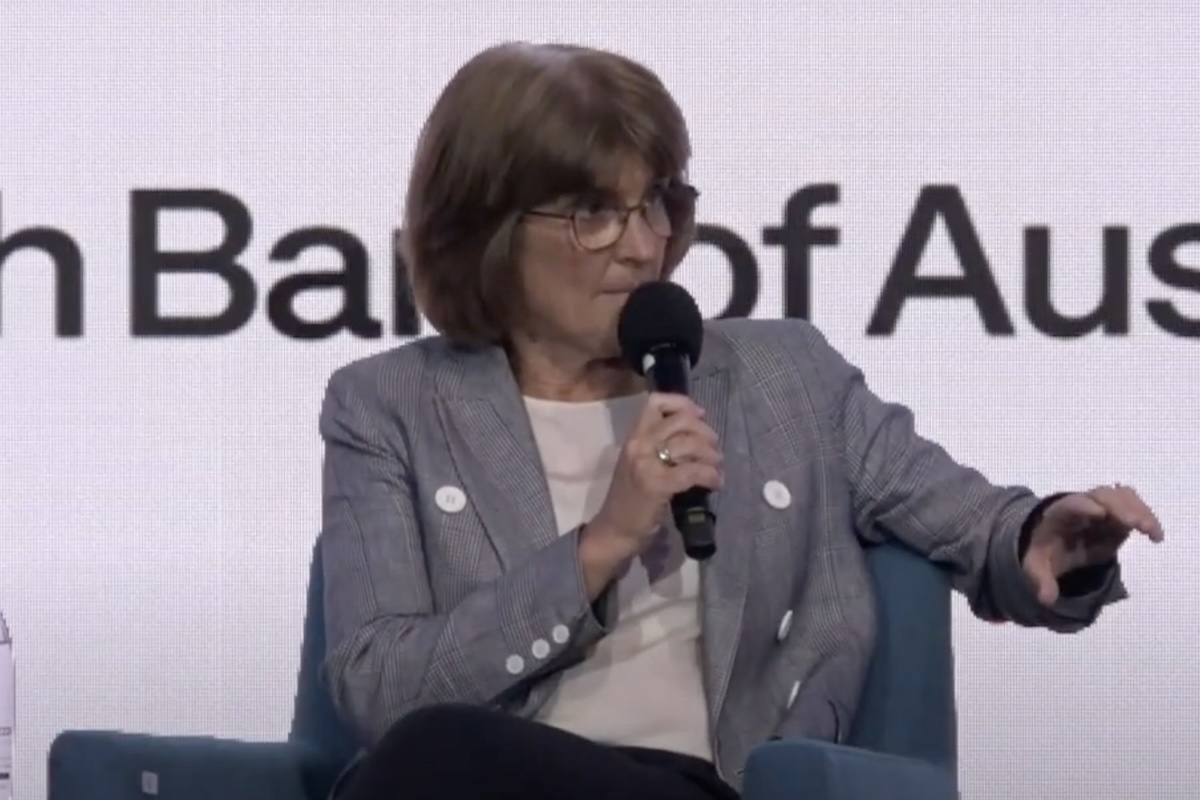

Speaking at a very recent fireside chat, RBA Governor Michelle Bullock all but doused hopes of a "Melbourne Cup Day" November rate cut. And in no uncertain terms, either. Here's what she said, and why she's scratching Cup Day cuts.
The RBA under Governor Bullock has always been cautious. While her predecessor hiked rates like rich lunatics hike Mount Everest (often and without invitation, preparation or warning), Bullock and her board have been "hawkish", to use an economist's favourite $50 word.
One thing was clear at this event: the RBA still doesn't have the settings it wants for the economy to justify cutting rates. Not in November, at least.
Speaking at the event, Bullock summed up her position in just five words: "We just have to wait."
Wait on what, you might ask? "A bit more data", of course added Governor Bullock.
Here's the download.
Bullock has said she and the Board want to see underlying inflation between 2% and 3%. The trimmed mean currently sits at 2.7%, meaning it's well-and-truly under control, right? Wrong.
While we may have been rejoicing at inflation rates within the RBA's prescribed band, it's still not enough for a cut says the Governor:
“Inflation is back in the band. It’s not down at the midpoint of the target range which is where we’re supposed to be aiming, but it is back in the band. And the unemployment rate is still pretty low compared with where it was pre-COVID. So I still think we’re in a pretty good position”
If you want to understand the RBA’s thinking, you can’t just squint at inflation and call it a day. The real drama, at least for Bullock, is happening in the jobs market—and it’s not as bleak as some might think.
Unemployment, sure, has ticked up. But if you expected Bullock to hit the panic button at the first sign of higher jobless numbers, you’d be mistaken. For her, monthly data is like Melbourne weather: unpredictable and not to be trusted without a few repeat showings.
Here’s how she put it: “Monthly numbers can be volatile and we do know sometimes that they jump up and then they jump back down again.” Translation? One bad print does not a crisis make.
Bullock’s bigger concern is whether the labour market is actually cooling off, or just catching its breath after a red-hot run. She’s not convinced we’re seeing a real downturn. In fact, she keeps coming back to the idea that the market is still “a little bit tight.”
Despite all the talk of layoffs and slowdown, Bullock says: “there’s a large chunk, maybe half the businesses we talk to, who say they still find it a little bit difficult to get labour, to get the right skilled labour.”
When all bets were off post-COVID and inflation was a global runaway train, Bullock's central bank peers in other countries were hiking rates. A lot.
Across the G20, central banks all spiked their rates. In the US, for example, rates got up to over 5% and have pretty much stayed there ever since.
Meanwhile our Euro-centric compatriots will remember rates that spiked by around 450 basis points in a matter of meetings.
Comparatively, Australia only got as high as 4.35% in November 2023 when our inflation (trimmed mean, mind you) was around 5%.
Similarly, our unemployment rates never spiked as high as our peers, either. In places like the US, Canada and the UK, unemployment catapulted above 6%. Locally, however, we’re still adding jobs. Sure, there's less momentum in the figures but it's hardly a crisis.
So the Governor says that because we didn't go as high as some of our friends in the global economic neighbourhood, we don't have to come down as far as they will as a result:
“We didn’t go up as high as other countries. So it might mean we don’t have to come down quite as far as other countries.”
A cut on Cup Day is slipping right through our collective fingers. But not all hope is lost. A lot still rides on the data we're yet to see print:
Inflation surprises:
Bullock doesn’t set a hard trigger on what a "surprise" looks like, but does say:
“If it [inflation] came in at a 0.9 I think that would be quite a material miss. And sometimes as well the devil’s in the detail too. You got to understand what drove the miss as well which is really important…”
For what it's worth, the next inflation data is due within hours of me writing this: 11:30am AEDT, 29 October. Labour data comes a little further down the road on 13 November.
Labour market deterioration:
“When we look at the forward-looking indicators for the labor market that doesn’t appear in the medium term to be suggesting that the unemployment rate is going to deteriorate quite markedly. So, we’d always thought that it would drift up a bit. Maybe it’s drifted up a bit further than we thought, but it’s not a huge amount out.”
Geopolitical shenanigans:
There’s awareness that global factors (geopolitical risk, asset price corrections) could change conditions quickly, but for now, Australia is “in a pretty good position,” she surmises.
You never know what you'll get when you roll the dice on the global and national economies. We've seen stranger things happen before.
If some market weirdness were to kick off, Governor Bullock says she and the Board are ready to admit they were wrong and change their minds on a rate cut:
“If it looks like we’re wrong on that, then we have to be prepared to change our mind and move.”
“We’re watching it. We are conscious that we want to try and keep the unemployment rate as low as we can without fueling inflation. And how close are we to that? We think we’re closeish, but it’s very uncertain.”